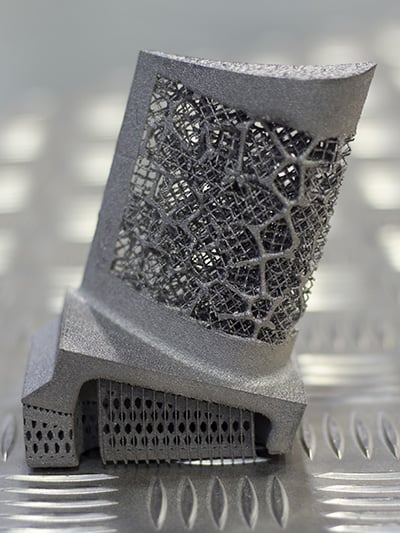The additive manufacturing industry has always been a fairly close-knit community. While there are rivalries amongst key players, when it comes to advancing the technology and what it can offer, there has always been a healthy level of collaboration. Research institutions and industry experts are well aware of the limitations and opportunities of additive and regularly come together, working across universities, businesses and borders to improve and advance the technology.
A good example of collaborative working can be found in the materials arena where we’re seeing a lot of organisations work together to research and develop new materials and to enhance the performance of others.
As an exemplar, in a collaboration that spans multiple universities and industrial partners, Iain Todd at Sheffield University is currently leading a large EPSRC initiative (a “Future Manufacturing Research Hub”) focused on delivering on ‘the promise of advanced powder processing technologies through creation of new, connected, intelligent, cyber-physical manufacturing environments.’

Together with UK and European business, industry and academic partners, Iain and his team are paving the way to reduce energy and waste in AM. Using particulate science, they are working to create powders that are active and designed, rather than passive elements in their processing. This transformation will lead to greater surface control, resulting in particles designed for process efficiency, reliability and product performance. Their work will ultimately extend the palette of available materials for current and future manufacturing.
Collaborating for medical advancement
At my own institution of the University of Nottingham, Ricky Wildman is also leading ground-breaking work in materials. At last year’s Additive International summit, he shared some of the advancements and discoveries he and his team of research partners from American and European institutions have made in another EPSRC project that is looking to develop functional and bio-materials for additive manufacturing. One area that they are working on is to improve – and ultimately – customise drug delivery for patients.
Collaboration is also fuelling commercial success in AM as evidenced by Stryker Orthopaedics’ joint licensing agreement with Chris Sutcliffe, who has had an auspicious career at both Liverpool University and Renishaw. The agreement applies to Chris’s work in developing 3D printed metal implants that mimic spongy bone tissue and enable rapid integration between the implant and the bone in both humans and animals. As a result of their successful partnership, Stryker has launched five families of implants and its “Joint Replacement and Spine” franchises continue to help relieve pain and injury for thousands – as well as thrive commercially. Additionally Chris has extended the work by founding a spin-out – Fusion Implants – that uses the bone-integrating technology to treat animals.

So, collaboration and sharing of ideas is key and the Additive International summit champions the coming together of people and the sharing of ideas for the betterment of the crucial area of Additive Manufacturing. Over the past 14 years, our delegates and speakers have always included our European and international colleagues; in these changing and challenging times, technological advancement cannot happen in isolation and we remain committed to facilitating the collaboration that drives success and look forward to welcoming all to the conference.
If you’d like to hear more from – and network with - AM leaders, visionaries and innovators, please join us in Nottingham at this year’s Additive International summit, 10-11th July. Visit https://www.additiveinternational.com/ for more details.










Water Sector Talent Exodus Could Cripple The Sector
Maybe if things are essential for the running of a country and we want to pay a fair price we should be running these utilities on a not for profit...